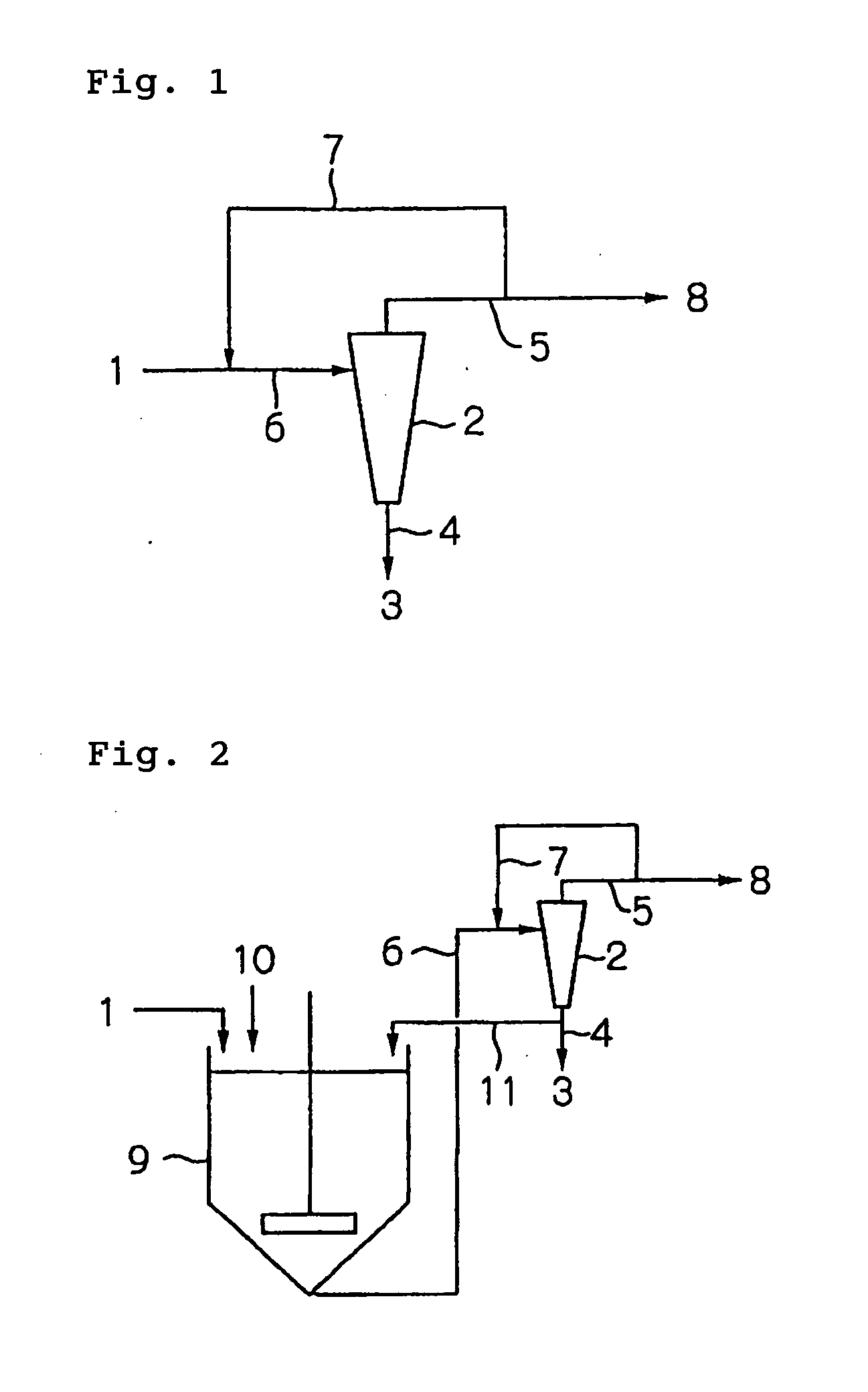Waste water and sludge treatment apparatus
a technology of sludge treatment and sludge, which is applied in the direction of water/sewage multi-stage treatment, other chemical processes, separation processes, etc., can solve the problems of deterioration of the flow of digested sludge, blockage of sludge pipes, and deterioration of the quality of treated water, etc., to achieve high map recovery rate, high purity, stable treatment
- Summary
- Abstract
- Description
- Claims
- Application Information
AI Technical Summary
Benefits of technology
Problems solved by technology
Method used
Image
Examples
examples
[0261] The present invention will now be described more specifically and in further detail using examples.
Examples 1 to 3 and Comparative examples 1 and 2 correspond to the embodiment described above with reference to FIGS. 1 to 3.
example 1
[0262] In this example, a performance test was performed on a liquid cyclone using raw sludge obtained by adding MAP prepared in advance to anaerobically digested sludge at 80 g / liter. The apparatus treatment flow is shown in FIG. 1.
[0263] A two-inch cyclone was used as the liquid cyclone 2. To increase the MAP concentration rate, the diameter of the sludge discharge pipe was set at 15 mm and the diameter of the micro-particle discharge pipe was set at 5 mm. The flow rate of the sludge introduced into the liquid cyclone 2 was set at 4 m3 / hr, and the introduction pressure was set at 0.45 Mpa. The supply rate of the raw sludge 1 was set at 0.6 m3 / hr, the circulation rate of the sludge treated by the liquid cyclone 2 (the amount circulated by the pipe 7) was set at 3.4 m3 / hr, and the circulation ratio (treated sludge circulation rate / raw sludge supply rate) was set at 5.7. The MAP concentration of the treated sludge 8 was 0.2 g / liter, as opposed to a MAP concentration of 80 g / liter in...
example 2
[0264] In this example, a phosphorus removal test was performed on digested sludge extracted from a digestion tank of a sewage treatment plant. The treatment flow is shown in FIG. 3.
[0265] The treatment flow was constituted by the sieve method screen residue removal apparatus 11, the crystallization reactor 9, and the liquid cyclone 2. The digested sludge 1 was treated by a vibrating screen having an aperture of 2.0 mm serving as the screen residue removal apparatus 11 to remove screen residue, and then introduced into the crystallization reactor 9. Magnesium chloride 10 was added to the crystallization reactor 9 to obtain an Mg / P molar ratio of 1 in relation to the orthophosphate ion concentration of the digested sludge, and a pH adjusting agent was added to adjust the pH to 8.0. The MAP concentration in the crystallization reactor 9 was maintained at 40 g / liter. Sludge obtained by mixing together a part of the sludge 6 in the crystallization reactor 9 and a part 7 of the treated ...
PUM
| Property | Measurement | Unit |
|---|---|---|
| temperature | aaaaa | aaaaa |
| temperature | aaaaa | aaaaa |
| specific gravity | aaaaa | aaaaa |
Abstract
Description
Claims
Application Information
 Login to View More
Login to View More - R&D
- Intellectual Property
- Life Sciences
- Materials
- Tech Scout
- Unparalleled Data Quality
- Higher Quality Content
- 60% Fewer Hallucinations
Browse by: Latest US Patents, China's latest patents, Technical Efficacy Thesaurus, Application Domain, Technology Topic, Popular Technical Reports.
© 2025 PatSnap. All rights reserved.Legal|Privacy policy|Modern Slavery Act Transparency Statement|Sitemap|About US| Contact US: help@patsnap.com



